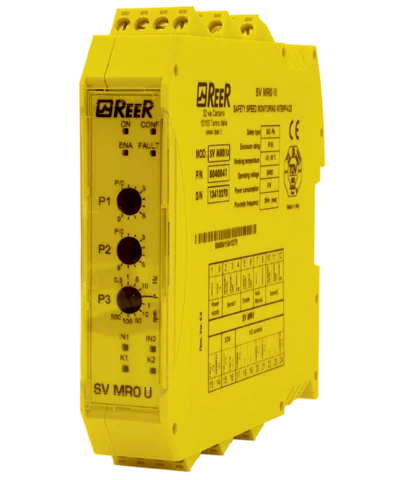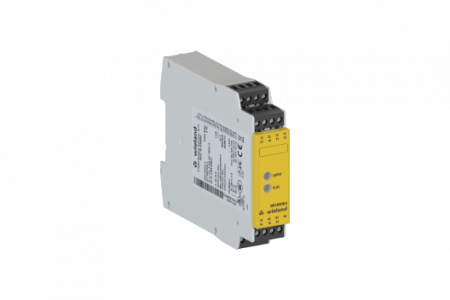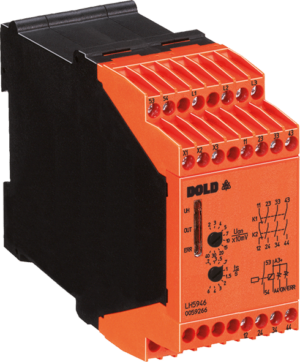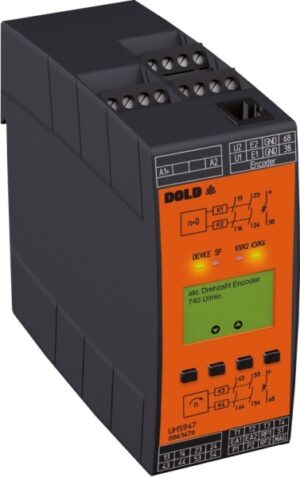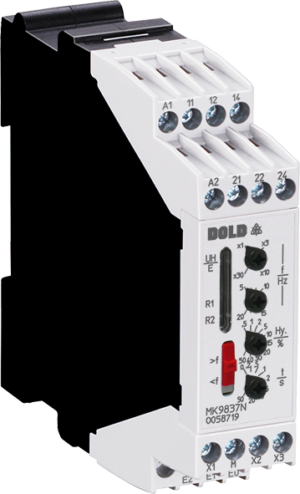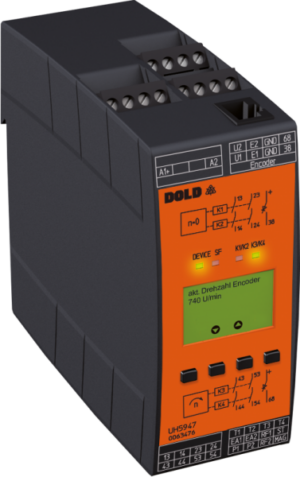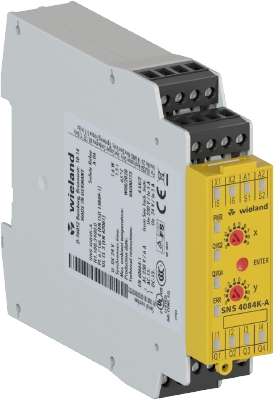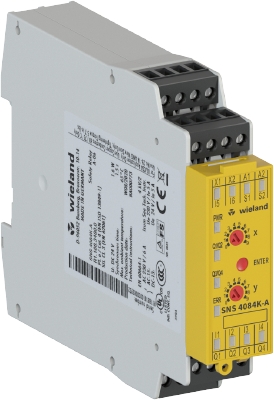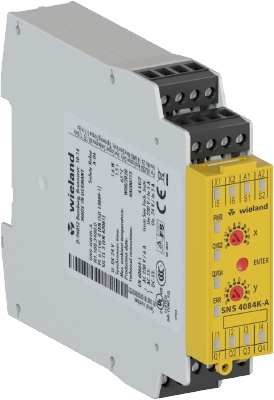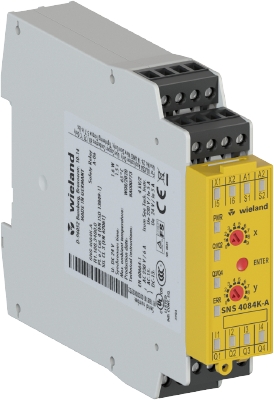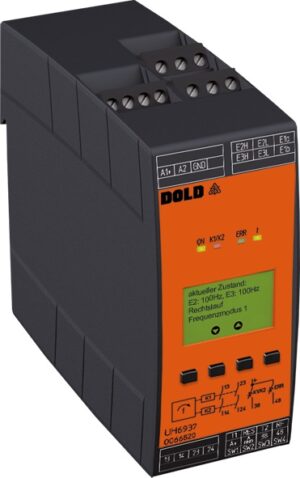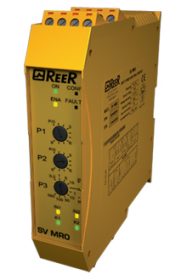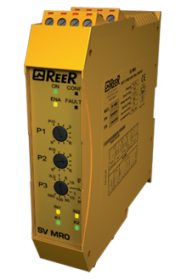Not all applications can rely on encoders or speed sensors. That’s where sensor-free speed monitoring relays come into play. These devices allow for safe speed…
Not all applications can rely on encoders or speed sensors. That’s where sensor-free speed monitoring relays come into play. These devices allow for safe speed monitoring using input signals directly from the motor windings, evaluating parameters such as frequency, direction of rotation, and standstill—without requiring additional sensors.
These systems are ideal for drives without sensors, linear movement equipment, or 3-phase and 1-phase motors where additional sensors are not viable due to cost, space, or environmental limitations.
Cost-Effectiveness and Reliability
Speed monitoring safety relays offer a cost-effective interface between electric motors and safety controls. By ensuring fail-safe detection of under-speed, over-speed, or standstill conditions, these relays reduce the need for expensive encoder-based systems and limit exposure to unexpected running of machines.
Ease of Commissioning
Unlike complex PLC-based safety controllers, standalone speed monitoring relays are designed for ease of commissioning. Most models feature:
- Rotary switches or pushbuttons for speed window setup
- Standard push-in connection or screw terminals
- USB or software configuration ports
- Built-in diagnostics and status LEDs
These plug-and-play capabilities reduce wiring time, simplify testing, and accelerate deployment in both new systems and retrofit projects.
Broader Integration with Safety & Automation Systems
Safety relays are a critical core of modern safety systems, but are only one part of an integrated architecture. These components will inevitably work in tandem with other critical components such as safety PLCs, safety contactors or safety light curtains (including muting light curtains) to ensure real-time hazard detection and safe machine shutdown. Common peripheral safety devices like the emergency stop button, two hand station, and emergency stop rope pull are also key elements, managed by the logic structure of either the safety relay or safety PLC.
Advanced installations frequently incorporate safety non-contact switches, RFID switches, mechanical interlock switches, and/or solenoid locking switches—each adding specific protective functions to the machinery. To maintain continuous system health, engineers also deploy standstill monitors, speed monitors, soft starters, and reversing contactors within their automation frameworks. For measuring the product itself, solutions such as measurement light curtains can be integrated.
Beyond motion and logic safety, electrical condition monitoring is equally essential. Devices like insulation monitors, battery monitors, current monitors, voltage monitoring relays, phase sequence relays, undervoltage relays, and undercurrent monitoring relays are often integrated to detect anomalies in power flow or equipment performance, with this data displayable on HMI Touch Panels or similar systems. To support reliable operation, high-quality power relays and regulated power supplies are essential.
Safety Regulation Compliance
The DIN EN 61800-5-2 standard governs safety functions for adjustable speed electrical drives, covering aspects like:
- Safe stop (SS1, SS2)
- Safe operating stop (SOS)
- Safely-limited speed (SLS)
- Safe direction (SDI)
- Safe standstill (SSM)
Compliance ensures that safety relays and drive systems correctly handle motion-related hazards and react promptly during failure or fault conditions. The standard outlines performance metrics, response time, and safety-related detection expectations for OEMs and integrators alike.
Technical Insights into Sensorless Standstill Monitoring
Under DIN EN 61800-5-2, sensorless techniques must demonstrate consistent performance in detecting zero motion. Technical considerations include:
- Input frequency resolution and response accuracy
- Use of frequency windows and time delays to confirm standstill
- Analog output integration for real-time diagnostics
- Safe speed range validation through test routines
Combining these techniques with external device monitoring and modular safety relay systems provides a layered safety strategy—one that supports both legacy equipment and next-gen automation platforms.
Evaluating Safety Relay Options
Key Features and Price Points
When selecting a speed monitoring relay, consider these core factors:
- Speed detection method: sensor-based vs. sensorless
- Monitoring capabilities: standstill, overspeed, underspeed, direction
- Installation ease: push-in or screw terminal wiring, DIN rail mounting
- Diagnostics: LED indicators, USB interface, or software tools
- Compliance: Certified to IEC 61508, ISO 13849, or EN 62061
Price points vary based on capabilities, but most standalone speed monitoring relays range from cost-effective basic models to high-end units with extended diagnostics and multi-signal processing.
